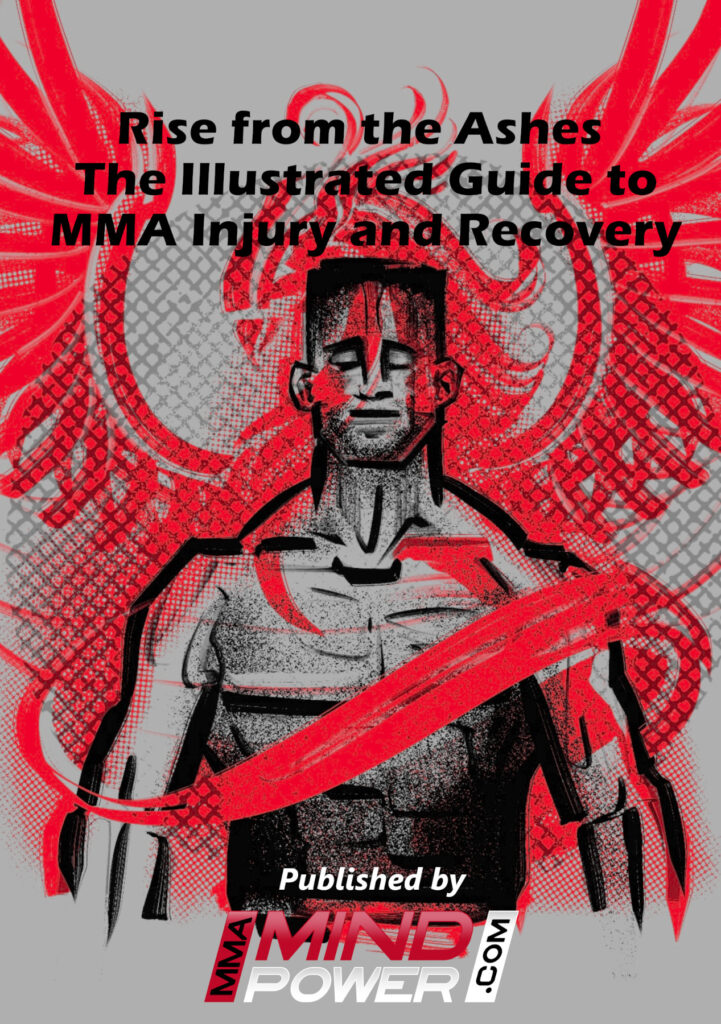Let’s talk about something every fighter dreads but inevitably faces at some point: injuries. Whether it’s a torn ligament, a broken bone, or a nasty cut, injuries are an unfortunate reality in the world of MMA. But fear not, because in this article, we’re going to explore a powerful tool for speeding up the recovery process: visualization techniques. So, sit back, relax, and let’s dive into the world of visualization and its role in healing MMA injuries.
The Grind: Dealing with Injuries in the Fight Game
Injuries are just part of the game in MMA. From sprains and strains to more serious injuries like fractures and concussions, fighters put their bodies through a tremendous amount of stress and strain every time they step into the cage. And when those injuries inevitably occur, the road to recovery can be long and challenging.
The Goal: Getting Back in the Game
But here’s the thing – every fighter’s goal after an injury is the same: getting back in the cage as quickly and as safely as possible. That means undergoing physical therapy, following a rehabilitation program, and doing everything in your power to speed up the healing process. And that’s where visualization techniques come into play.
Picture Perfect: What is Visualization?
So, what exactly is visualization, and how can it help with injury recovery? Simply put, visualization is the practice of mentally imagining yourself performing a specific action or achieving a particular goal. It’s like playing a movie in your mind, complete with sights, sounds, and sensations – and it’s a powerful tool for enhancing performance and accelerating healing.
But visualization isn’t just about picturing yourself back in the cage – it actually has a tangible impact on your body’s ability to heal. Studies have shown that visualization can help reduce pain, improve range of motion, and even speed up the healing process by enhancing blood flow and promoting tissue repair. In other words, what you see in your mind can actually become reality.
Seeing is Believing: Creating Mental Imagery
One of the most effective ways to use visualization in injury rehabilitation is by creating vivid mental imagery of the healing process. Close your eyes and picture yourself going through each step of your rehab program – from stretching and strengthening exercises to returning to sparring and competition. The more detail you can visualize, the more real it will feel – and the faster your body will respond.
Positive Vibes Only: Using Affirmations
In addition to visualizing the healing process, it’s important to flood your mind with positive affirmations and messages of encouragement. Repeat phrases like “I am strong,” “I am healing,” and “I am ready to return to the cage” to yourself throughout the day – whether you’re doing rehab exercises, resting, or just going about your daily routine. It may sound cheesy, but trust me, it works wonders for keeping your spirits high and your motivation strong.
Another key aspect of using visualization in injury rehabilitation is setting specific, achievable goals for your recovery. Whether it’s hitting a certain range of motion in your injured joint, returning to light training by a certain date, or making your triumphant return to the cage within a set timeframe, having clear goals to visualize can give you something to work towards and keep you focused on the end goal.
My Personal Experience with Visualization
I can’t stress enough how much visualization has helped me personally in my own injury recoveries. From a torn ACL to a nasty shoulder injury, I’ve been through my fair share of setbacks – but each time, visualization has been a game-changer for speeding up my recovery and getting me back in the cage sooner than expected. Whether it’s visualizing myself powering through a rehab exercise or picturing myself dominating my next opponent, visualization has helped me stay focused, motivated, and on track throughout the healing process.
How You Can Apply Visualization to Your Own Recovery
So, how can you apply visualization to your own injury recovery? It’s simple – start by setting aside a few minutes each day to sit quietly and visualize yourself going through your rehab program, hitting your goals, and ultimately returning to the cage stronger than ever. Use positive affirmations to keep your spirits high and your motivation strong, and don’t be afraid to get creative with your mental imagery. The more vivid and detailed you can make your visualizations, the more effective they’ll be in accelerating your recovery.
In conclusion, visualization is a powerful tool for speeding up the injury recovery process and getting fighters back in the cage sooner than expected. By creating vivid mental imagery, using positive affirmations, and setting clear goals for your recovery, you can harness the healing power of visualization and take control of your own rehabilitation journey. So, the next time you find yourself sidelined with an injury, remember – what you see in your mind can become reality. So, visualize your way to victory, and I’ll see you back in the cage before you know it!






